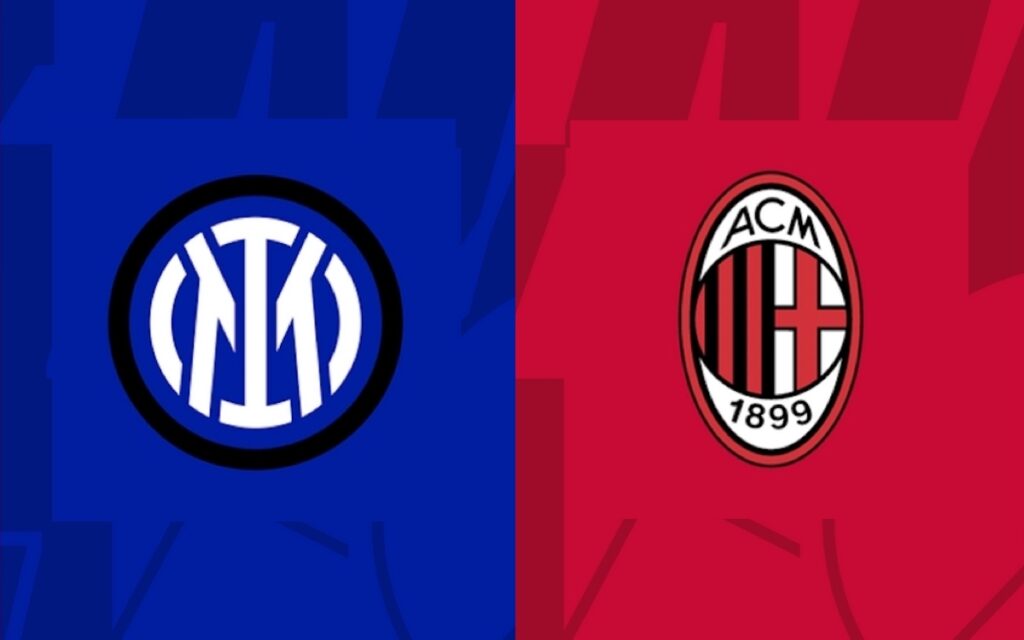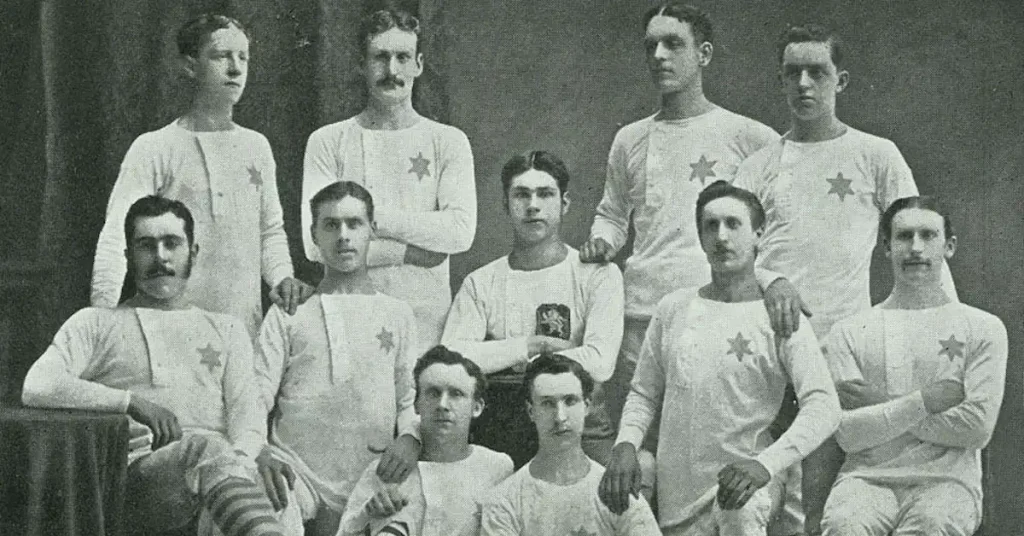A storied rivalry, one that will forever be etched into football folklore as an iconic matchup. A game that brings out the best and worst of players.
As innovation paves the way for new means to make history, supporters can be a part of the ‘Derby della Madonnina’ in new exciting ways. Now fans can even directly contribute to the great history of the two Milanese sides.
Inter’s fan tokens and Milan’s fan tokens let fans decide various aspects of their club’s matchday experience, like warm-up music or the team’s welcoming motto. An innovation that could possibly bring even deeper meaning to the derby.
But, when it comes to the San Siro and one of football’s biggest derby days, the matches are what matter the most. With 237 official games between the two sides, there’s a comprehensive history of meetings between the two sides.
The Birth of Two Giants
On 13 December 1899, Herbert Kilpin and various others founded the Milan Cricket and Football Club. The club’s first elected president would be Alfred Edwards, a former British vice-consul in Milan.
Success came almost immediately. Milan ended Genoa’s dominance, after just two seasons of existence, in 1901, winning the national league. Things continued to go well, winning the league two further times. Before long, however, the club found itself torn in twain.
In 1907, after Milan’s third title, the club introduced a ruling banning the signing of any more foreign players. The decision was massively controversial, to the point where Milan would quickly lose members. Many members wanted Milan to be an Italian-centric club, a sentiment that shared enough support for it to become a reality.
Feeling football didn’t need to be a jingoistic endeavour, two fractions supporting contrasting, uncompromisable viewpoints formed. Painter Giorgio Muggiani would lead a splinter group of himself and 43 other members to form Internazionale, named as such ‘because we are brothers of the world’.
On the 9th of March 1908, Internazionale was officially formed.
Just seven months later, the two sides faced for the first time, in a tournament held in Switzerland, the Chiasso Cup, where Milan ran out 2-1 victors in the first of many classic encounters between the two sides.
A few months later, in January of 1909, the first official match between the two sides would be played, Milan again winning, this time a fiercely contested 3-2 win for La Rossoneri. The origin of the name Rossoneri, simply came from the black and red strip Milan wore. La Nerazzurri comes from the same origin, referring to the black and blue strip.
This defeat would only spur Inter on, as they would soon claim a much bigger prize. After just two years, Inter won their first league title, much to the dismay of Milan. To make matters worse, Inter had not only managed to beat Milan for the first time but had done so by trouncing them 5-0 away from home.
A week later in the return fixture, Milan lost 5-1 to Inter, Milan’s misery only further compounded by their imminent league victory.
Ever since Inter’s early days, they had been considered bourgeois, snooty and cosmopolitan as opposed to the working-class Milan.
This perception of the side earned them the nickname ‘bauscia’, a Milanese term meaning ‘braggart’ that made fun of their upper-class foundation and ideology. Quite ironic, given that Milan’s founder, Hebert Kilpin was a highly regarded member of Milanese high-class society.
Inter would win the league four more times before Milan finally won their fourth title. By that time, it was the 1950s.
During Mussolini’s rule, Milan had been used as somewhat of a PR piece, as he used football to push his ideology. Conversely, Inter were forcibly renamed to Società Sportiva Ambrosiana, having been merged with Unione Sportiva Milanese. Inter soon got their identity back, just 2 years later, new chairman Pozzani caved to pressure from shareholders, and the club were officially Inter again.
The Sharing of The San Siro
After the Second World War, a development that would only deepen an already fierce rivalry would come to be. The San Siro became the home of both sides Milan had been playing in the San Siro since 1926, whilst Inter had been playing in the comparatively tiny, 10,000-seat Arena Civica, from 1930.
In 1947, Inter made San Siro their home. The main reasons behind sharing a stadium were simple. Both clubs were huge Milanese clubs, so building a second large stadium was fraught with difficulty, and by sharing they could both save on the costs of stadium maintenance, meaning for all the fan’s hatred of the other, the two sides were essentially joined at the hip.
One key, yet confusing point of inquiry, is the name difference. See, despite both playing at the San Siro, you may have noticed Inter play at the Estadio Giuseppe Meazza. This is simply Inter’s name for the San-Siro, both as an act of defiance, to city rivals Milan and a homage to one of Inter’s greatest-ever players, Giuseppe Meazza.
Meazza was the club’s first true legend, scoring 31 goals in his debut season, going on to score 240 in 348 for Inter in his 13 years there. He would briefly play for Milan too, moving there from Inter in 1940, but he never got close to replicating his form at La Nerazzurri in his two years at Milan.
Inter and AC Milan’s rivalry only deepened as a result of the ground share, tearing the city in two by way of club allegiance. The typically working-class Milan fans gained the nickname ‘tramvees’ in reference to a reliance on public transport, which was a response to Milan fans calling them ‘Motoretta’, as Inter fans often travelled to games by scooter.
After the second world War, both clubs pushed each other to become better and better, the two sides becoming the biggest in Italy, as they battled for trophies. After back-to-back league wins for Inter in 1953 and 1954, Milan finally started to consistently beat their rivals.
Four League trophies in the space of 8 seasons, without an Inter reply, would see Milan enjoy the best period of their history so far. After being on top of Milan for most of their history, La Rossinieri were now ahead of Milan for league titles won, and Inter were not content to roll over for Milan.
From here, the two sides would battle forth, both suffering and profiting at the hands of each other. There’s plenty more to explore in the history of both clubs and their ongoing battle to best one another, but that’s a whole different article entirely. The focus here is the Derby della Madonnina.
So the obvious question is…
Who’s Won the Most Matches Between the Two?
Inter take the crown for official matches, having bested Milan 89 times in 237 games. But… in knockout competitions, Milan has a clear edge over their rivals, winning 2 out of 3 champions league knockout ties, and 10 Coppa Italia matches to Inter’s 9.
When it comes to the individuals, the all-time top scorer in the Derby Della Madonnina is Milan’s Andriy Shevchenko, with 14 goals. Giuseppe Meazza also has 14, but one came for Milan against Inter, making him Inter’s top scorer in the derby.
Viewing this as another battle for supremacy between the two, Milan can just about claim a victory here, having one of Meazza’s goals come against Inter almost invalidates the goal when it comes to Inter vs Milan’s top scorer.
Paulo Maldini has the most appearances for Milan, with 56. While Javier Zanetti sits below him in second on overall appearances, with 47.
| Period | Matches | Inter Milan Wins | Draws | AC Milan Wins | Inter Milan Goals | AC Milan Goals |
| First championships (1898–1929, 1945–46) | 22 | 8 | 3 | 11 | 40 | 36 |
| Serie A (1929–present) | 178 | 68 | 56 | 54 | 251 | 229 |
| Championship | 200 | 76 | 59 | 65 | 291 | 265 |
| Campionato Alta Italia | 2 | 1 | 0 | 1 | 3 | 3 |
| Coppa Italia | 27 | 9 | 8 | 10 | 27 | 34 |
| Supercoppa Italiana | 2 | 1 | 0 | 1 | 4 | 2 |
| UEFA Champions League | 6 | 2 | 2 | 2 | 4 | 6 |
| Official Matches | 237 | 89 | 69 | 79 | 329 | 310 |





